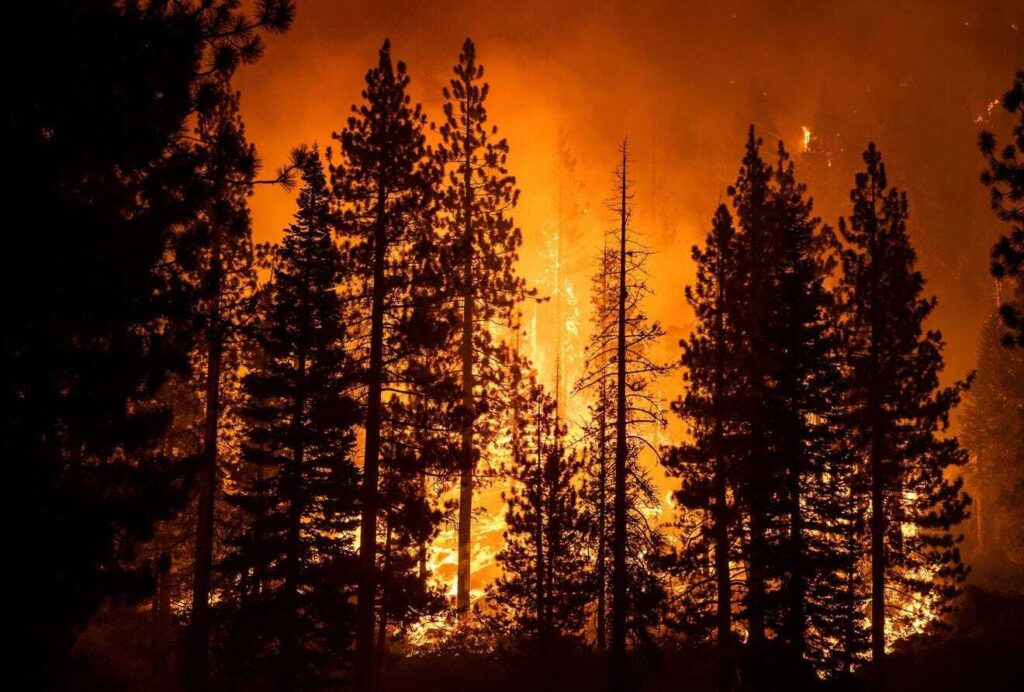Much of Earth got hotter in 2021, worldwide weather weirder, wildfires more devastating, the atmosphere more problematic, and soil less fertile. In the arider expanses, animal and plant futures became more precarious; forests further diminished; the oceans warmer, higher and more acidic.
Here’s a roundup of some of the findings and phenomena regarding the state of the planet reported this past year:
• Hundreds died during a June heat wave in which Canadian high-temperature records were shattered on three consecutive days. Day three reached 121 degrees in Lytton, British Columbia, a town 90% destroyed soon after by a wildfire.
• June ended as the hottest month ever recorded in North America. Globally, July was the hottest month recorded dating back 142 years.
• Summer land temperatures worldwide broke a record. October land temperatures ended as the Northern Hemisphere’s warmest.
• The highest temperature in the Arctic, 100.4 degrees, occurred in the Siberian town of Verkhoyansk. The Arctic, according to updated computations, is warming four times faster than the rest of the planet, jeopardizing cold-hardy species.
• For only the third time, rain was observed falling on the Greenland ice sheet, and this was the latest in the year there was ever such an instance. About 1.2 trillion tons of ice are melting each year, researchers said.
• Greenhouse gas concentrations were at their highest level in 800,000 years, and according to the U.S. National Oceanic and Atmospheric Administration, global sea levels hit a record high in 2020.
• Altered by deforestation, a significant portion of the Amazon rainforest has become a net carbon emitter after serving for millennia as a carbon sink, the journal Nature reported. The collapse of the Amazon rainforest is likely to happen within 50 years, two separate studies concluded.
• Some 58% of the U.S. West — covering 4% more land than in 2020 — was in a “severe,” “extreme” or “exceptional” drought after two decades of diminished rainfall and increased temperatures.
• Burned forests aren’t growing back the same after wildfires. By 2050, researchers said, about 15% of burned-out forests won’t grow back at all because the local climate is no longer suited to their requirements.
• Some 14%, 11,700 square kilometers, of the world’s coral reefs were lost between 2009 and 2018, the Global Coral Reef Monitoring Network reported. Ocean waters near the equator have become too hot for some species, forcing them north and south into less friendly waters.
• The ivory-billed woodpecker, Bachman’s warbler and the Scioto madtom — a small catfish once found only in Big Darby Creek — were among 22 species the U.S. Fish and Wildlife Service was preparing to declare extinct.
• Nighttime light pollution was linked by researchers in England to the precipitous decline of insect species, the journal Science Advances reported. Climate change was identified as the most influential predictor of U.S. butterfly decline, which has happened at a pace of about 1.6% a year for the past four decades, according to the journal Science.
• Plastic waste from COVID-19, most notably facemasks, was found to be killing wildlife in the Netherlands, England and Canada.
• Toxic “forever chemicals” linked to liver damage, thyroid disease, decreased fertility, high cholesterol, obesity, hormone suppression and cancer were measured in air and rainwater samples around Cleveland and five other Great Lakes sites.
As the planet spins and the future becomes more precarious for human life, plant life and wildlife, nature turning routinely freakish can no longer be considered an anomaly or accident.
Article Credit: The Columbus Dispatch
